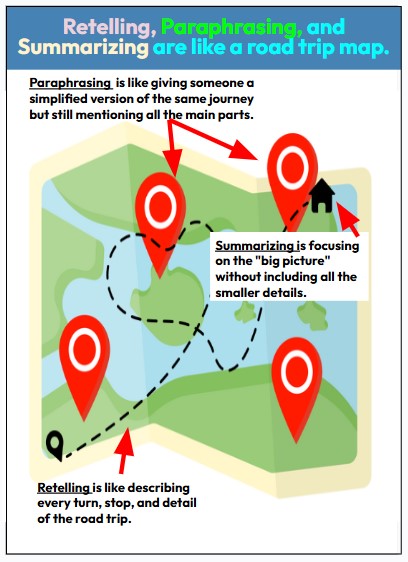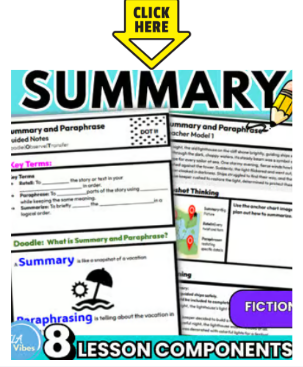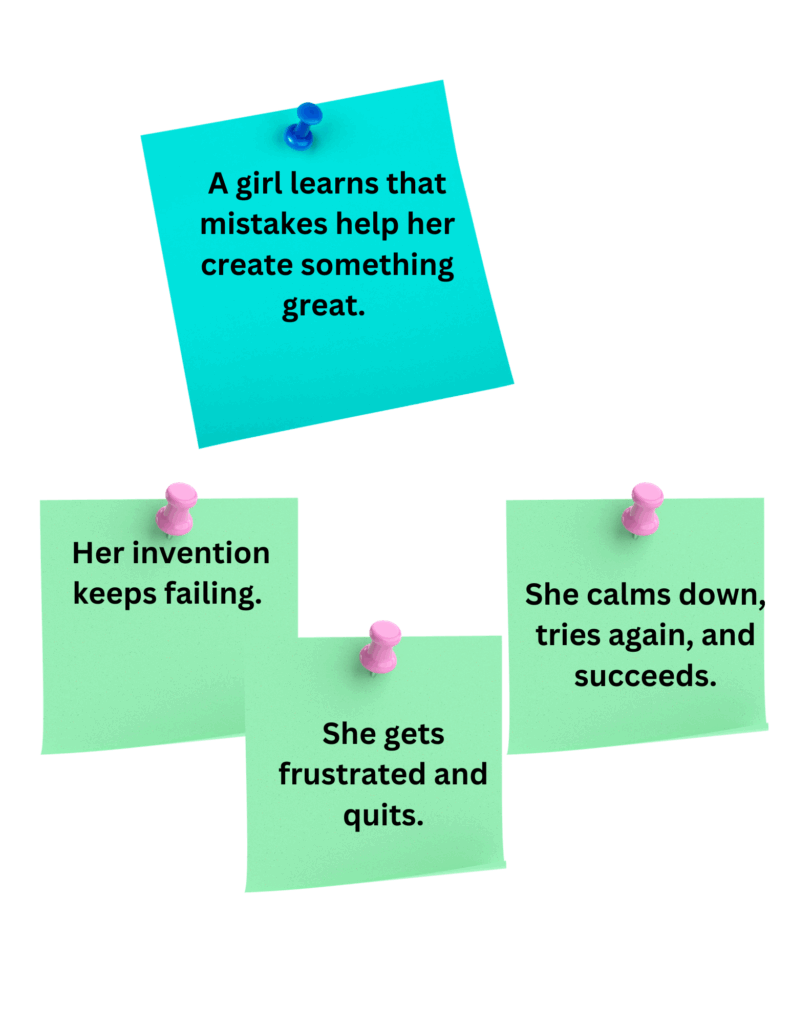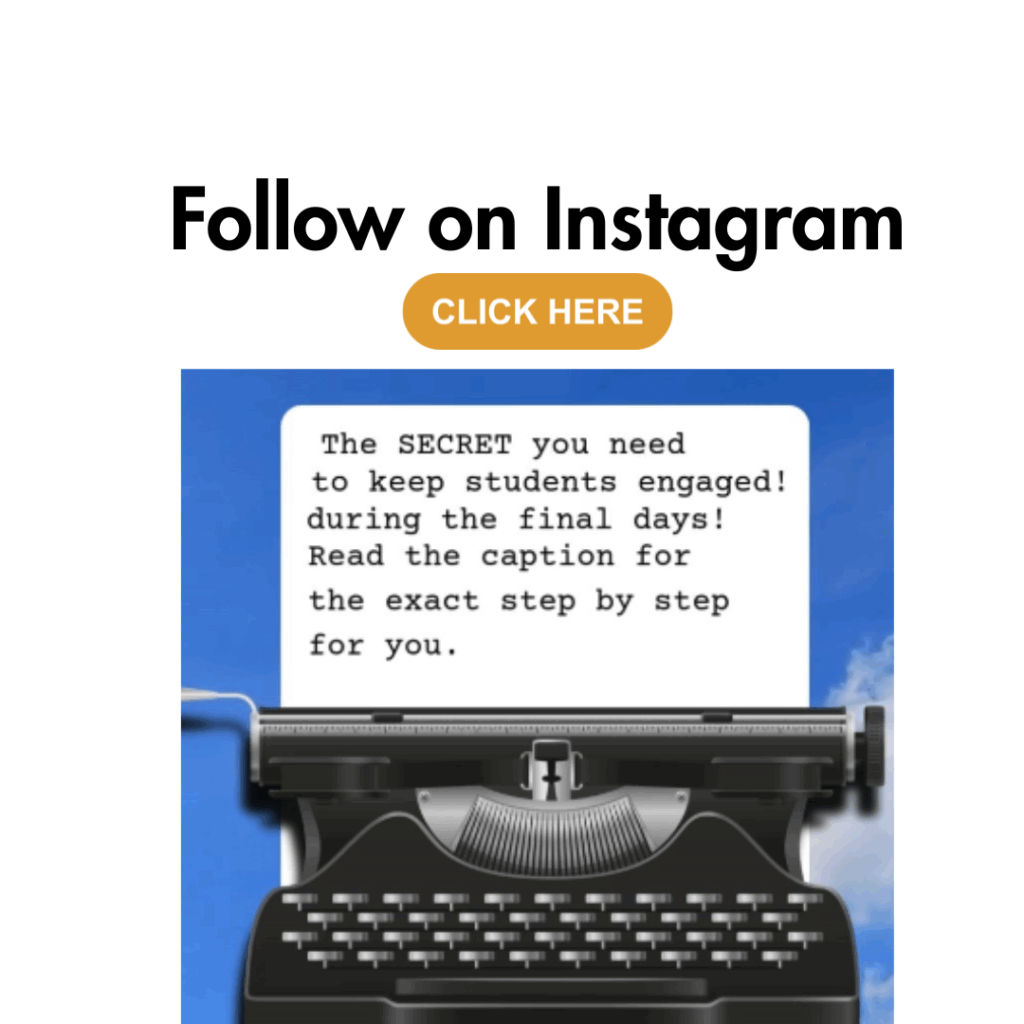Last updated on May 26th, 2025 at 10:20 pm

You just got back from vacation and your friend asks you what it was like. You have 3 options: 1. Describe every turn, stop, and detail of the trip (retelling), 2. Give a simplified version of the twists and turns and main parts (paraphrasing), or 3. Focus on the big picture without all the smaller details (summarize). Teaching summarizing strategies to 3rd, 4th, and 5th graders is more than just shortening the text-it’s about thinking critically. These summarizing activities for 3rd–5th grade make that skill fun, clear, and meaningful.
What You’ll Learn About Summarizing Strategies
By the end of this post, you will be able to :
- Understand what summarizing truly means for 3rd-5th grade readers and why it matters.
- Teach summarization with confidence.
- Use engaging summarizing activities to teach summarizing effectively.
What Does Summarizing Mean for 3rd–5th Graders?
Summarizing is drilling down to the main points of a text or event. The misconception is that it is just “shortening” the text, but it is more strategic than that. You are condensing the essential points-main idea and supporting details. Students are being trained to zoom in on the heart of the story.

Why Summarizing Is an Essential Reading Skill
Summarizing is a life skill. It’s like putting on noise canceling headphones. You only hear what’s important and cut out all the distractions.
Summarizing helps you accomplish the following:
- Make informed decisions without all the fluff
- Process and retain important information
- Answer reading comprehension questions
- Support clearer communication
How to teach summarizing to 3rd, 4th, and 5th graders
Before students can summarize, they need to identify the main idea. Without this core skill, summarizing will fall flat. If this skill is strong, then use the following steps for Draw It, Snap It, and Say It
- Read a Mentor Text: Use a high-interest picture look like The Most Magnificent Thing by Ashley Spires.
- Draw It: Have students draw a scene-by-scene comic strip of what happened in the story. They can include all the little moments.
- Snap It: Use your camera on your phone and explain to students that if you had to take ONE photo of their drawing what would it be ? The teacher walks around the class and “snaps” the important scene. Students circle or redraw the one moment-explain that this is the main idea of the story.
- Say It: Using their “snapshot,” students write or share a short summary using sentence starters like
- The story is mostly about _ and the following details support _.
- The main thing that happened was_ and the following details support _

Say it: The story is mostly about how a girl who perseveres through challenges. The details that support this main idea is “Her hard work attracts a few admirers. But they don’t understand. They can’t see the MAGNIFICENT thing that she has in her mind,” “She puts her tools away and walks. It really is a beautiful day,” and “It really is the most magnificent thing.”
Want a grab-and -go way to teach summary? Download my 8-part summarizing lesson structure with a warm up, mini lesson, teacher model, guided notes, guided practice, independent activity, small group, and exit ticket.

Teaching Summarizing: Ways to Practice
Engagement means that students are active learners. How do you spice up summary? These summarizing activities for 3rd–5th grade are fun, easy to implement. We will use the book The Magnificent Thing by Ashley Spires as the mentor text for the following activities.
- SWBST Comic Panels: Students use the Somebody, Wanted, But, So, Then structure, then sketch each part in a comic strip. Twinkl has great templates for this activity. For example, in The Magnificent Thing, SOMEBODY-A little girl and her dog assistant WANTED to build the most magnificent thing BUT everything she made kept turning out wrong, and she became frustrated and wanted to quit SO she took a walk to calm down and think THEN she came back with a new perspective and successfully created her magnificent invention.
2. GIST Challenge (20-Word Summary): This strategy guides students to use their limited amount of words strategically. Let’s use the technique with the book-A girls tries to build something amazing , messes up, gets angry, but doesn’t quit-and finally makes something magnificent. (20 words, boom!)
3. Sticky Note Story Map: Super simple, yet effective method. Give students 4 sticky notes using two different colors. Students write the main idea on one color and 3 key details on the other color. This is simple, visual, and scaffolded.

4. Summarizing Relay Race: Students work in teams to summarize a paragraph at each station. It’s active learning with movement!
Keeping students engaged doesn’t have to be complex. Sprinkle in fun and movement and you have a recipe for success.
Conclusion: Teach Summarizing with Confidence and Clarity
A summary is the snapshot of a story. It captures the most important parts in one clear shot—no need for every tiny detail.
Which summarizing activity will you try first? Share in the comments!

